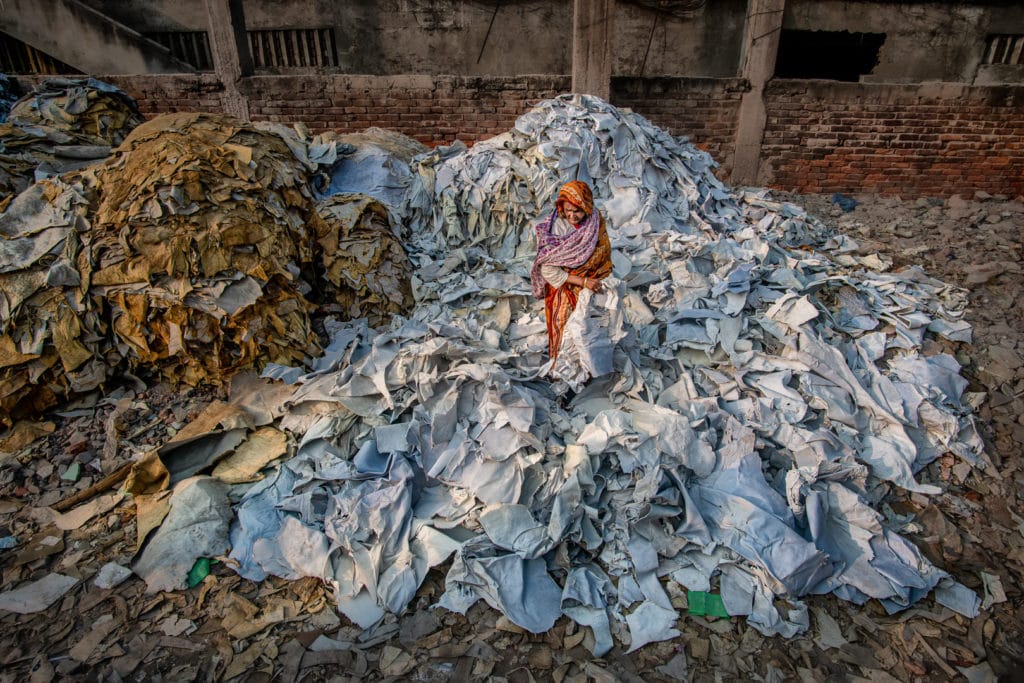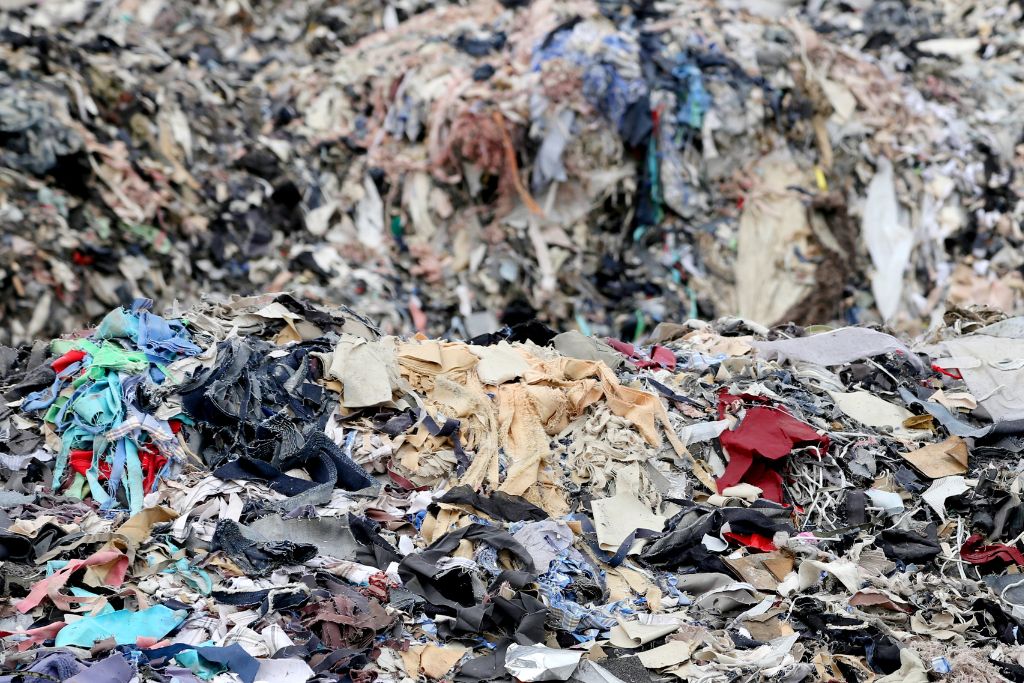The extremely detrimental impact of fast fashion waste on the environment is no news. Besides being responsible for nearly 10% of global carbon emissions, the industry is also infamously known for the amount of resources it wastes and the millions of clothes ending up in landfills every day. Here are 10 highly concerning statistics about textile waste.
—
10 Statistics About Fast Fashion Waste
1. 92 million tonnes of textiles waste is produced every year
Of the 100 billion garments produced each year, 92 million tonnes end up in landfills. To put things in perspective, this means that the equivalent of a rubbish truck full of clothes ends up on landfill sites every second. If the trend continues, the number of fast fashion waste is expected to soar up to 134 million tonnes a year by the end of the decade.
2. The apparel industry’s global emissions will increase by 50% by 2030
If a business-as-usual scenario prevails in the coming years – meaning that no action is taken to reduce fast fashion waste – the industry’s global emissions will likely double by the end of the decade.
3. The average US consumer throws away 81.5lbs of clothes every year
In America alone, an estimated 11.3 million tons of textile waste – equivalent to 85% of all textiles – end up in landfills on a yearly basis. That’s equivalent to approximately 81.5 pounds (37 kilograms) per person per year and around 2,150 pieces per second countrywide.
4. The number of times a garment is worn has declined by around 36% in 15 years
The throwaway culture has worsen progressively over the years. At present, many items are worn only seven to ten times before being tossed. That’s a decline of more than 35% in just 15 years.

5. The fashion industry is responsible for 20% of global waste water
Dyeing and finishing – the processes by which colour and other chemicals are applied to fabrics – are responsible for 3% of global CO2 emissions as well as over 20% of global water pollution. Along with yarn preparation and fibre production, these two processes have the highest impacts on resource depletion, due to the energy-intensive processes based on fossil fuel energy.
6. It takes 20,000 litres of water to produce one kilogram of cotton
Besides being a huge source of water pollution, fast fashion also contributes to massive quantities of water being wasted every day. If this is difficult to picture, just think that about 2,700 litres of water are needed to make just one t-shirt, which would be enough for one person to drink for 900 days. Moreover, a single load of washing uses between 50 and 60 litres of water.
7. $500 billion is lost each year because of under-wearing and failure to recycle clothes
The worst aspect of our reckless thrown-away culture is that the vast majority of clothes being tossed each year is not recycled. Globally, just 12% of the material used for clothing ends up being recycled. Much of the problem comes down to the materials our clothes are made from and inadequate technologies to recycle them. “The fabrics we drape over our bodies are complex combinations of fibres, fixtures and accessories. They are made from problematic blends of natural yarns, man-made filaments, plastics and metals.”
You might also like: Is Hong Kong’s Avant-Garde Textile Recycling Facility a Real Solution to Fast Fashion Problems?
8. Nearly 10% of microplastics dispersed in the ocean each year come from textiles
Garments are a huge source of microplastics because so many are now made of nylon or polyester, both durable and cheap. Each wash and dry cycle, especially the latter, sheds microfilaments that move through our sewage systems and end up in waterways. It is estimated that half a million tons of these contaminants reach the ocean each year. That’s the equivalent to the plastic pollution of more than 50 billion bottles.
9. 2.6 million tonnes of returned clothes ended up in landfills in 2020 in the US alone
Most of the items returned to retailers from consumers end up in landfill. This is mainly because it costs more to the company to put them back in circulation than to get rid of them. Reverse logistics company Optoro also estimates that in the same year, 16 million tonnes of CO2 emissions were created by online returns in the US in 2020 – the equivalent to the emissions of 3.5 million cars on the road for a year.
You might also like: Fast Fashion and Its Environmental Impact
10. Fast fashion brands are producing twice the amount of clothes today than in 2000
This dramatic increase in production has also caused an increase in both pre- and post-production textile waste. Due to the number of cut outs for the clothing, a large number of materials get wasted as they cannot be used any further, with one study estimating that 15% of fabric used in garment manufacturing is wasted. Post-production, 60% of approximately 150 million garments produced globally in 2012 were discarded just a few years after production.
Research for this article was conducted by Earth.Org research contributor Chloe Lam
This story is funded by readers like you
Our non-profit newsroom provides climate coverage free of charge and advertising. Your one-off or monthly donations play a crucial role in supporting our operations, expanding our reach, and maintaining our editorial independence.
About EO | Mission Statement | Impact & Reach | Write for us


















